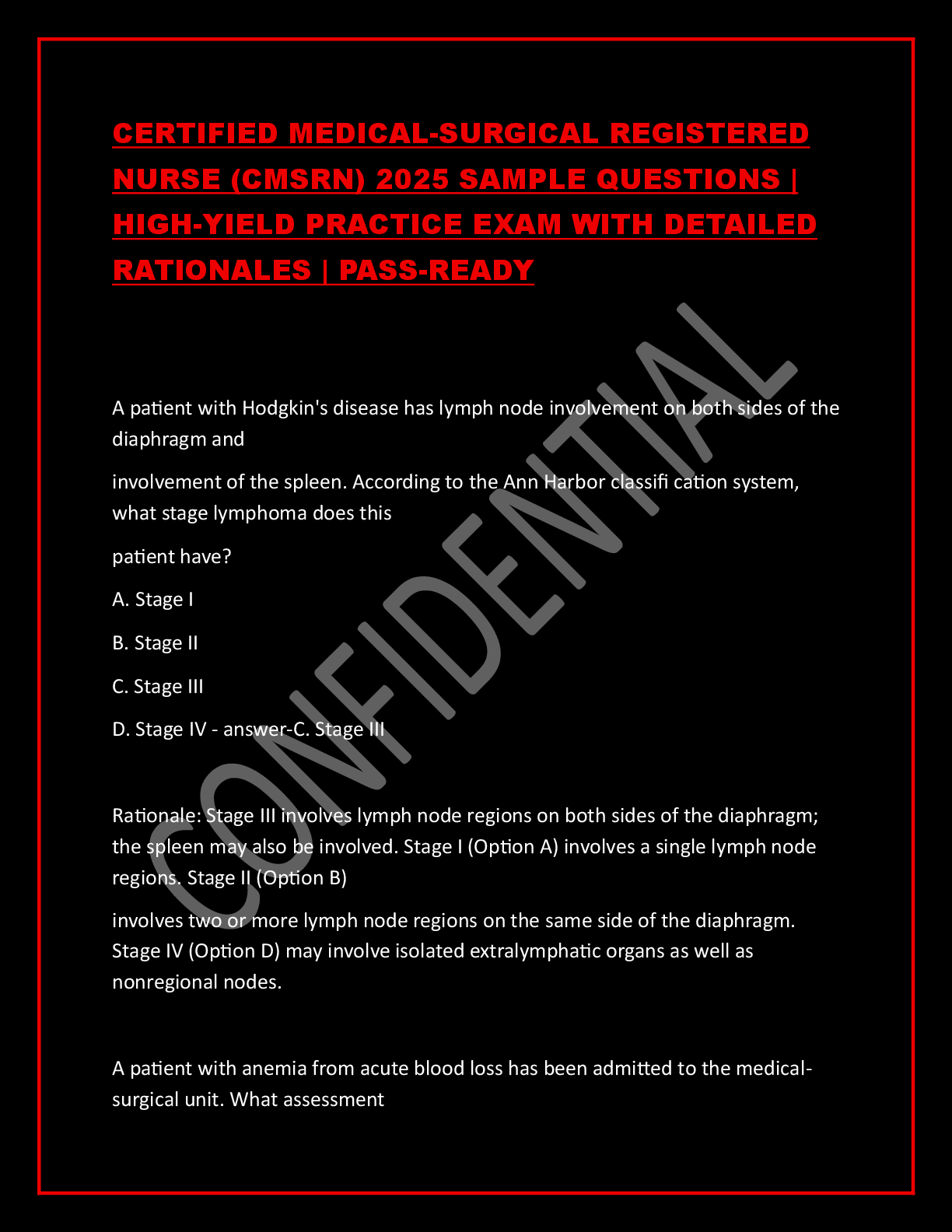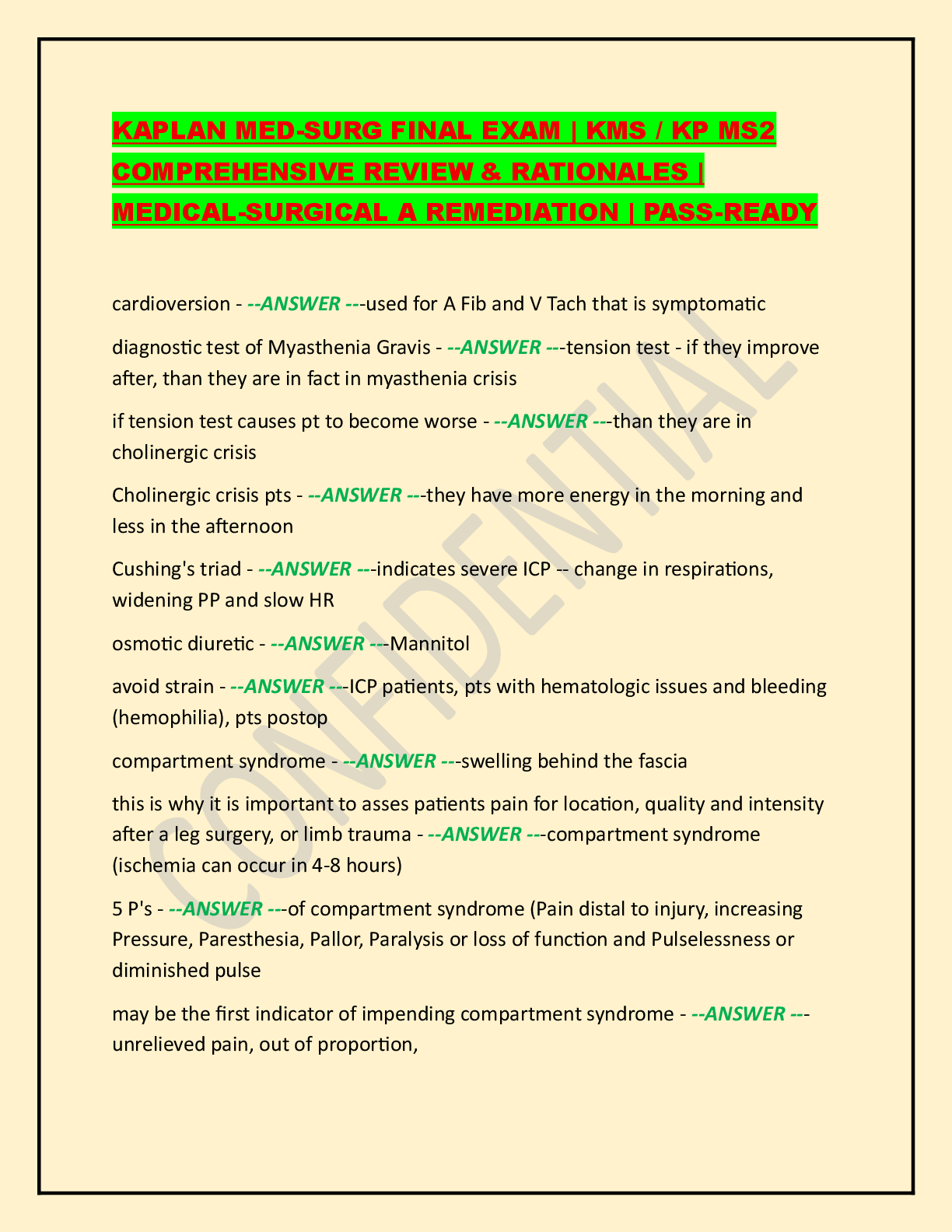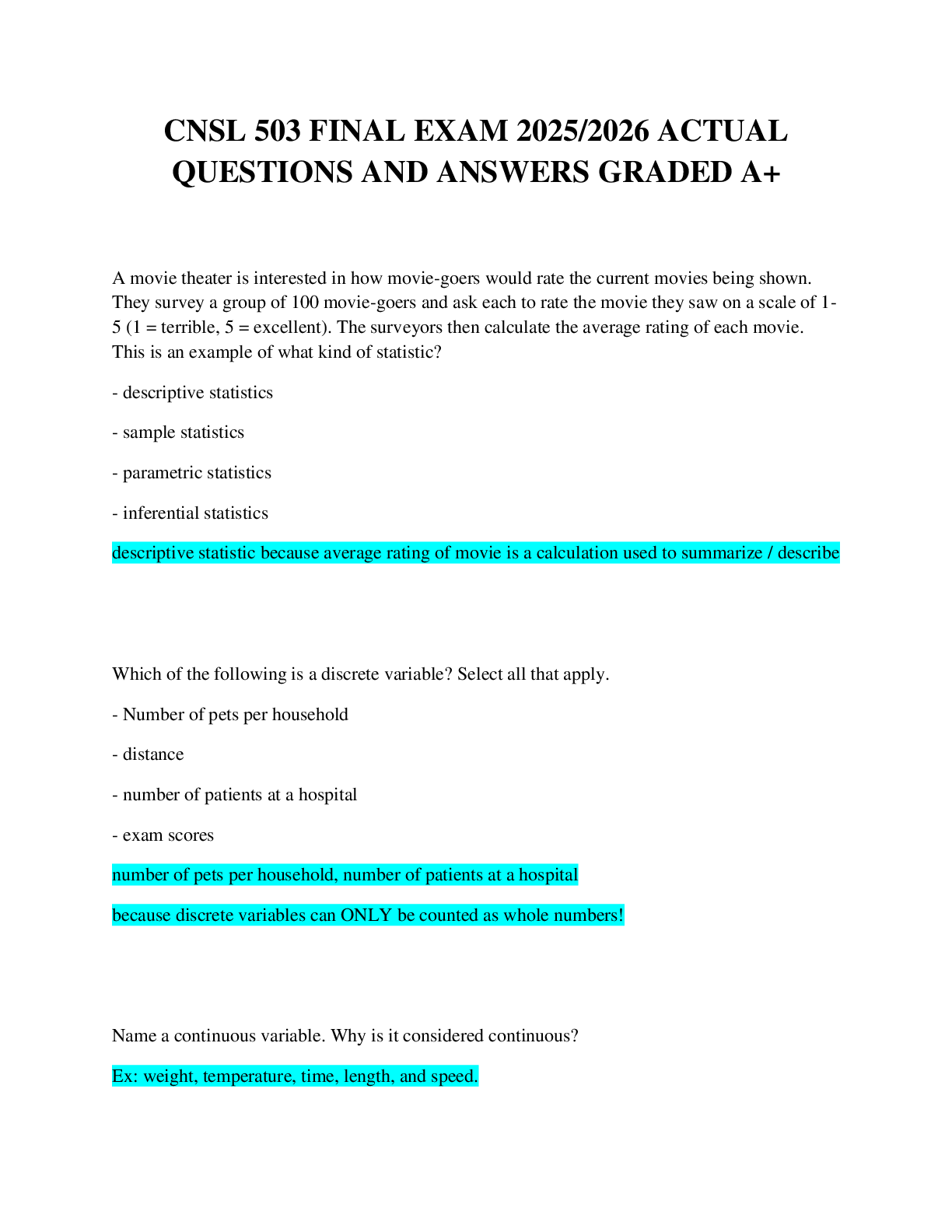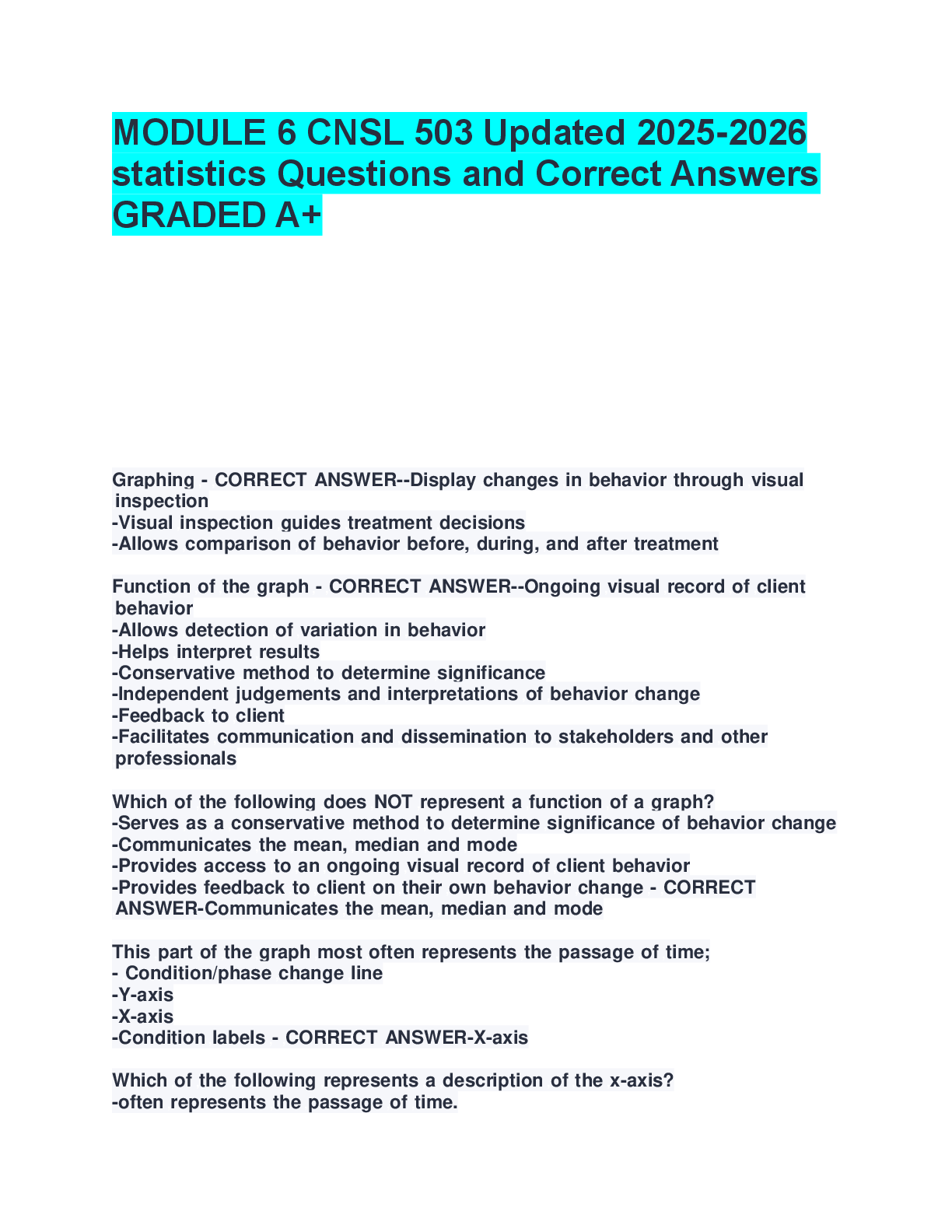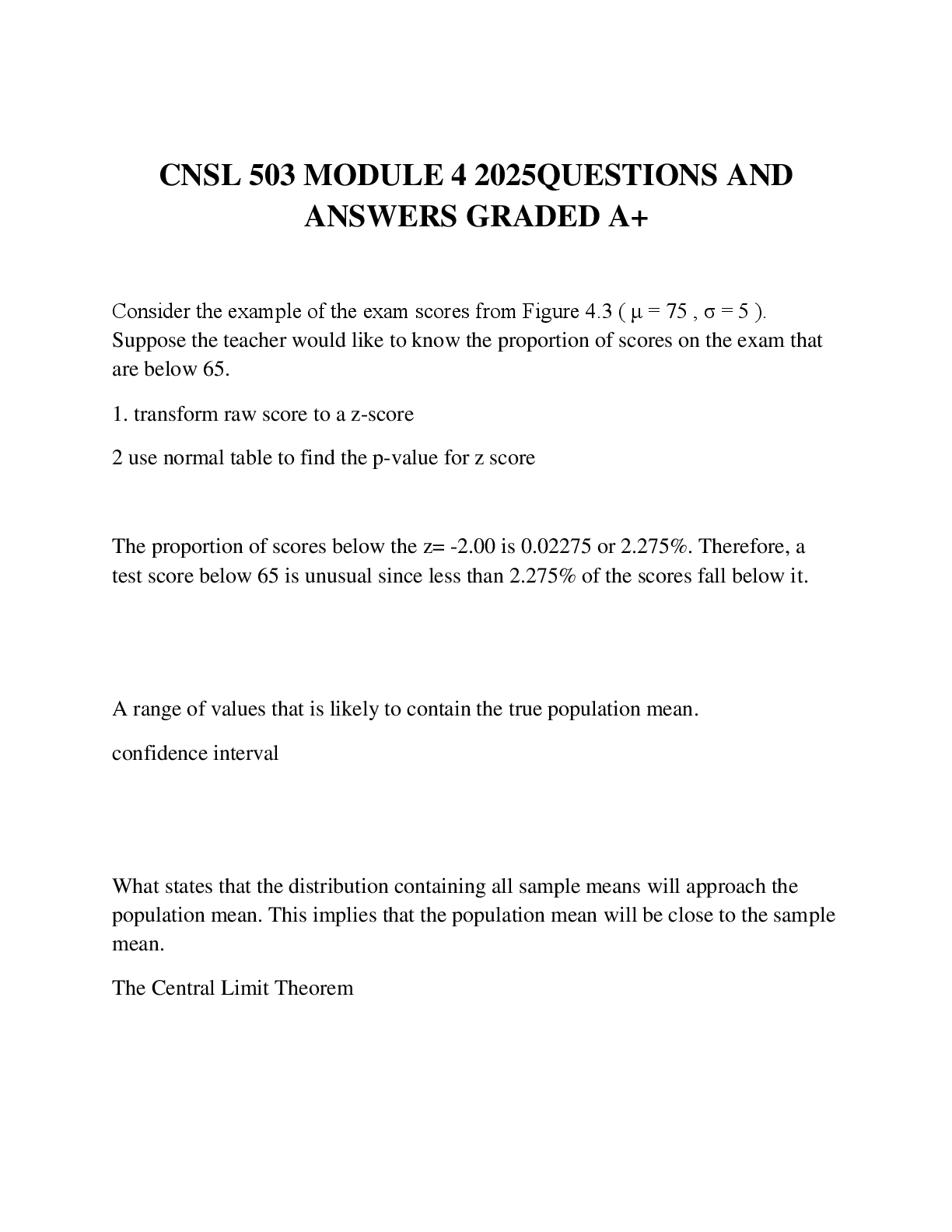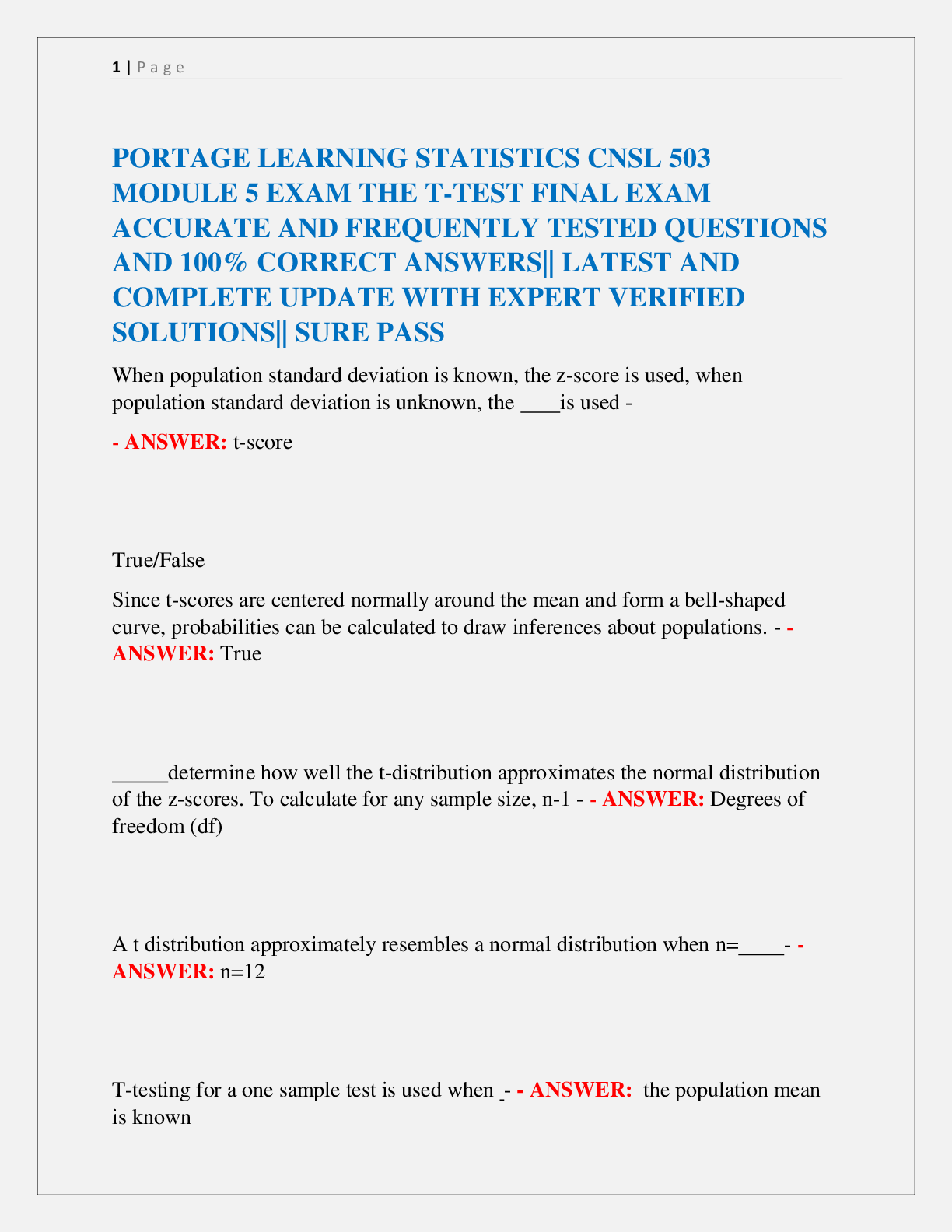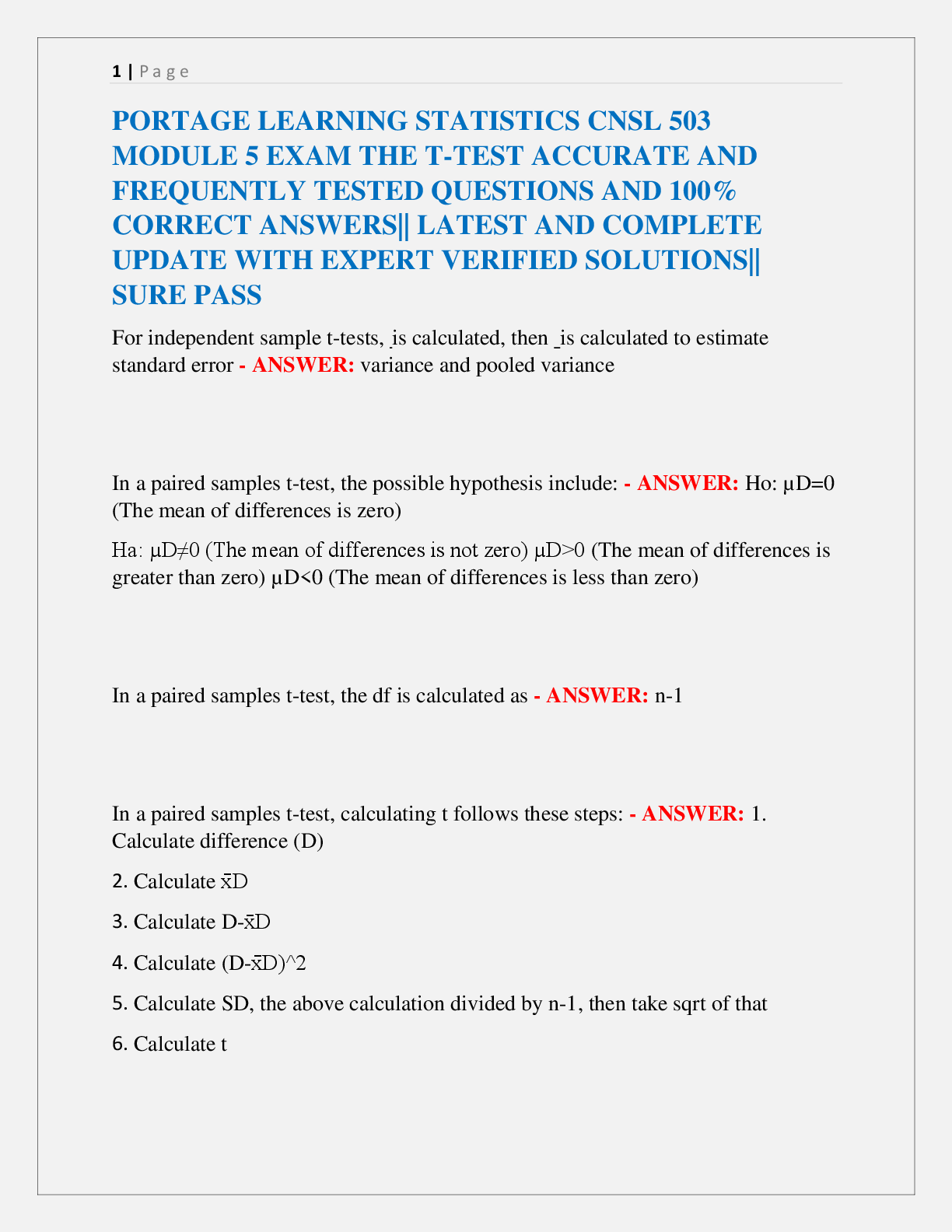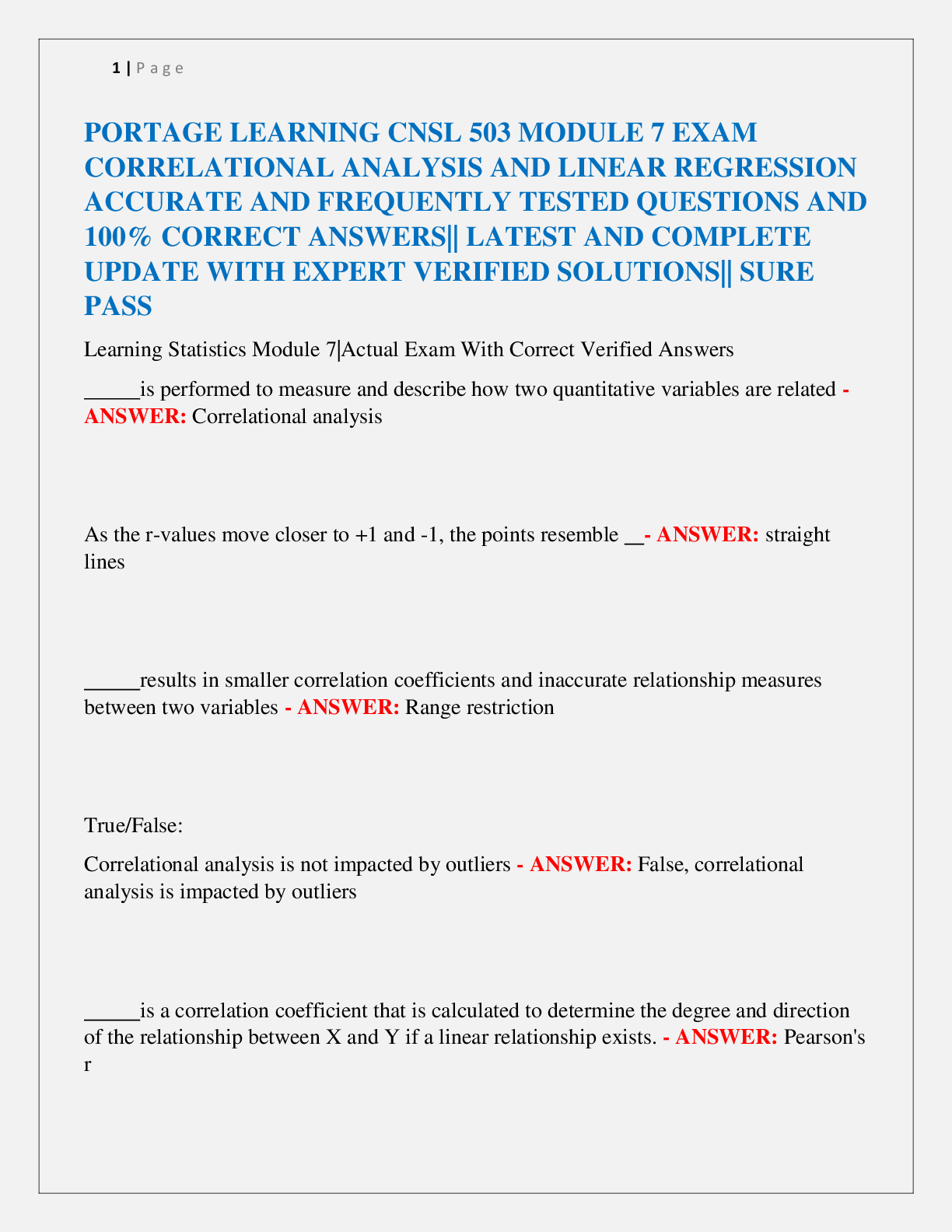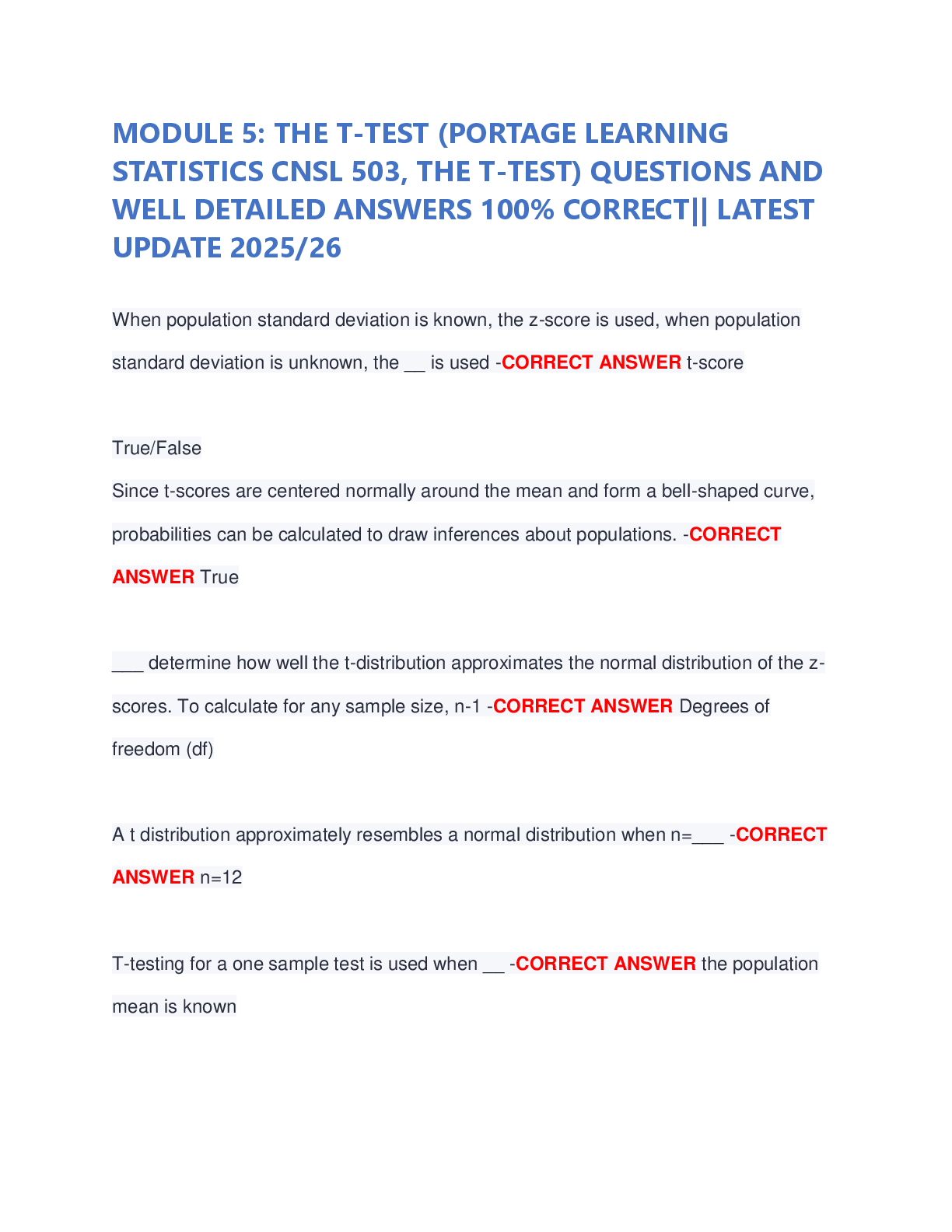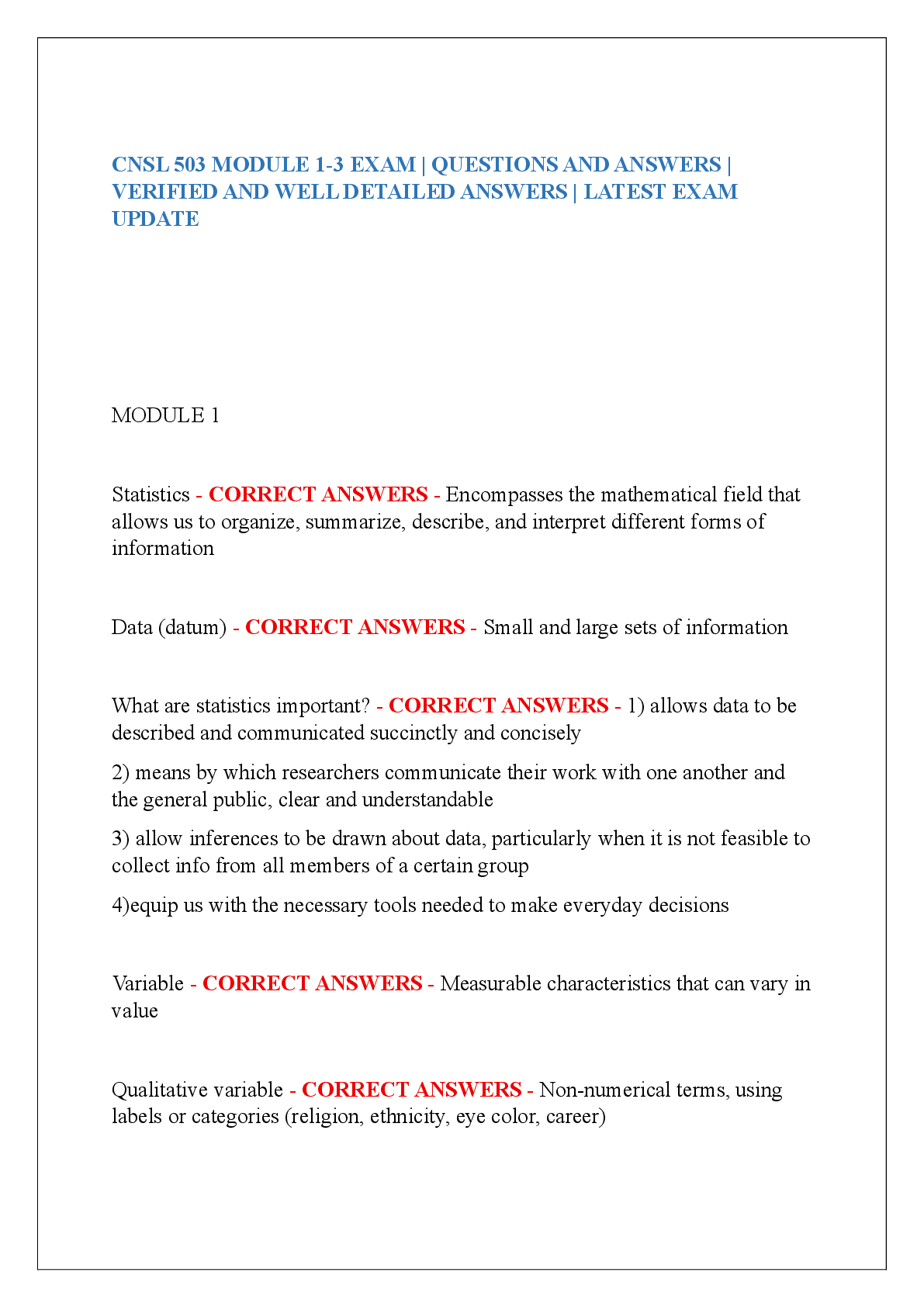ATI Funds Proctored Exam Rationales
Document Content and Description Below
Funds Proctored Exam Rationales 1. A nurse is conducting an admission interview with a client. Which of the following pieces of assessment information should the nurse collect during the introductor ... y phase of the interview? A. Clients level of comfort and ability to participate in the interview -The nurse should assess the client’s level of comfort and establish a rapport during the introductory or orientation phase. The nurse should engage in active listening and present a relaxed attitude to place the client at ease and encourage client participation. This will assist the nurse in gaining the necessary data to formulate appropriate nursing diagnoses and outcomes. B. Previous illnesses and surgeries -incorrect: The nurse should assess the client’s health history, including previous illnesses and surgeries, during the working phase of the interview. C. Events surrounding the client’s recent illness -incorrect: The nurse should assess the client’s health history, including events surrounding the recent or current illness, during the working phase of the interview. D. Sociocultural history -incorrect: The nurse should assess the client’s sociocultural history during the working phase of the interview. 2. A nurse is performing an abdominal assessment of a client. Which of the following positions should the nurse tell the client to assume for this examination? A. Lithotomy -incorrect: The lithotomy position is useful for gynecological examinations. B. Lateral -incorrect: The lateral recumbent, or side-lying position, limits access to the abdomen. This position is useful when auscultating the heart to detect murmurs. C. Supine -The nurse should tell the client to assume the supine position to promote relaxation of the abdominal muscles. Having the client bend the knees enhances relaxation of the stomach muscles. D. Sims -incorrect: The Sims’ position limits access to the abdomen. This position is useful for rectal and vaginal examinations. 3. A nurse is caring for a client who is postoperative following an abdominal surgery. Which of the following actions should the nurse perform first after discovering the client’s wound has eviscerated? A. Cover the incision with a moist sterile dressing - The nurse should apply the safety and risk-reduction priority-setting framework, which assigns priority to the factor or situation posing the greatest safety risk to the client. When there are several risks to client safety, the one posing the greatest threat is the highest priority. The nurse should use Maslow’s Hierarchy of Needs, the ABC priority-setting framework, and/or nursing knowledge to identify which risk poses the greatest threat to the client. An open wound increases the risk of peritonitis, and any exposed organ tissue could dry out. Therefore, covering the wound with a moist sterile dressing is the first action the nurse should take to protect the client. B. Have the client lie on his back with his knees flexed -incorrect: The nurse should use this position to reduce pressure on the incision. However, the nurse should take another action first. C. Call the client’s surgeon -incorrect: The nurse should notify the surgeon or direct a colleague to notify the surgeon while tending to the client’s immediate need. However, the nurse should take another action first. D. Reassure the client -incorrect: The nurse should respond to the client’s emotional needs. However, the nurse should take another action first. 4. A nurse is preparing to insert an NG tube for a client who has a bowel obstruction. Which of the following actions should the nurse take first? A. Give the client a glass of water -incorrect: The nurse should provide a glass of water to facilitate swallowing during tube insertion of the NG tube. However, there is another action the nurse should take first. B. Assist the client into a sitting position -incorrect: The nurse should assist the client into a sitting position to insert the NG tube more easily and allow gravity to help facilitate the passage of the tube. However, there is another action the nurse should take first. C. Explain the procedure to the client -The nurse should apply the least invasive priority-setting framework when caring for this client, which assigns priority to nursing interventions that are least invasive to the client, as long as those interventions do not jeopardize client safety. The nurse should take interventions that are not invasive to the client before interventions that are invasive. This reduces the number of organisms introduced into the body, decreasing the number of facility-acquired infections. Informing the client about the procedure reduces fear and assists in gaining the client’s cooperation, which is important for NG tube insertion and is the priority nursing intervention. D. Measure the length of tubing to be inserted -incorrect: The nurse should measure the length of the tubing to be inserted to ensure proper tube placement. However, there is another action the nurse should take first. 5. A nurse is providing discharge teaching to a client who is recovering from lung cancer. The provider instructed the client that he could resume lower-intensity activities of daily living. Which of the following activities should the nurse recommend to the client? A. Sweeping the floor -incorrect: sweeping the floor is moderate-intensity activity B. Shoveling snow -incorrect: Shoveling snow is a high-intensity activity C. Cleaning windows -incorrect: Cleaning windows is a moderate-intensity activity D. Washing dishes -Washing dishes requires a low level of activity and is appropriate for this client. 6. A nurse is caring for a client who is receiving dextrose 5% in water IV at 150 mL/hr and has ingested 4 oz of water and ½ pint of milk. What is the total 8-hr fluid intake in milliliters that the nurse should document for this client? (round to nearest whole number) -1560 7. A nurse is performing a physical examination of a client. The nurse should use percussion to evaluate which of the following parts of the client’s body? A. Heart -incorrect: The nurse uses inspection, palpation, and auscultation to evaluate the heart. B. Lungs -Percussion creates a vibration that helps the examiner determine the density of the underlying tissue. The lungs are hollow organs that can produce sounds such as resonance (a hollow sound over alveoli) or dullness (a dull sound over consolidated areas of the lungs or diaphragm). The nurse also uses auscultation and palpation when evaluating the lungs. C. Thyroid gland -incorrect: The nurse uses inspection and palpation to evaluate the thyroid gland. D. Skin -incorrect: The nurse uses inspection and palpation to evaluate the skin. 8. A nurse is supervising a newly licensed nurse who is administering a controlled substance. Which of the following actions by the newly licensed nurse indicates an understanding of the procedure? A. Placing an unused portion of the medication in a sharps box -incorrect: The nurse should not dispose of an unused portion of a controlled substance in the sharps container because this action does not maintain safe control of the narcotic. B. Asking another nurse to observe the disposal of an unused portion of the medication -The nurse should ask another nurse to witness the disposal of a controlled substance to maintain safe control of the narcotic. C. Counting the inventory of the available narcotic after administering the medication -incorrect: The nurse should count the inventory of the controlled substance before removing a dosage to maintain safe control of the narcotic. D. Ensuring that another nurse signs the control inventory form after disposal of an unused portion of medication -incorrect: Two nurses should sign the control inventory form after the disposal of a portion of a narcotic to maintain safe control. 9. A nurse is caring for a client who has acute renal failure. Which of the following assessments provides the most accurate measure of the client’s fluid status? A. Daily weight [Show More]
Last updated: 3 years ago
Preview 1 out of 152 pages

Buy this document to get the full access instantly
Instant Download Access after purchase
Buy NowInstant download
We Accept:

Reviews( 0 )
$12.00
Can't find what you want? Try our AI powered Search
Document information
Connected school, study & course
About the document
Uploaded On
Aug 02, 2022
Number of pages
152
Written in
All
Additional information
This document has been written for:
Uploaded
Aug 02, 2022
Downloads
0
Views
151



.png)








